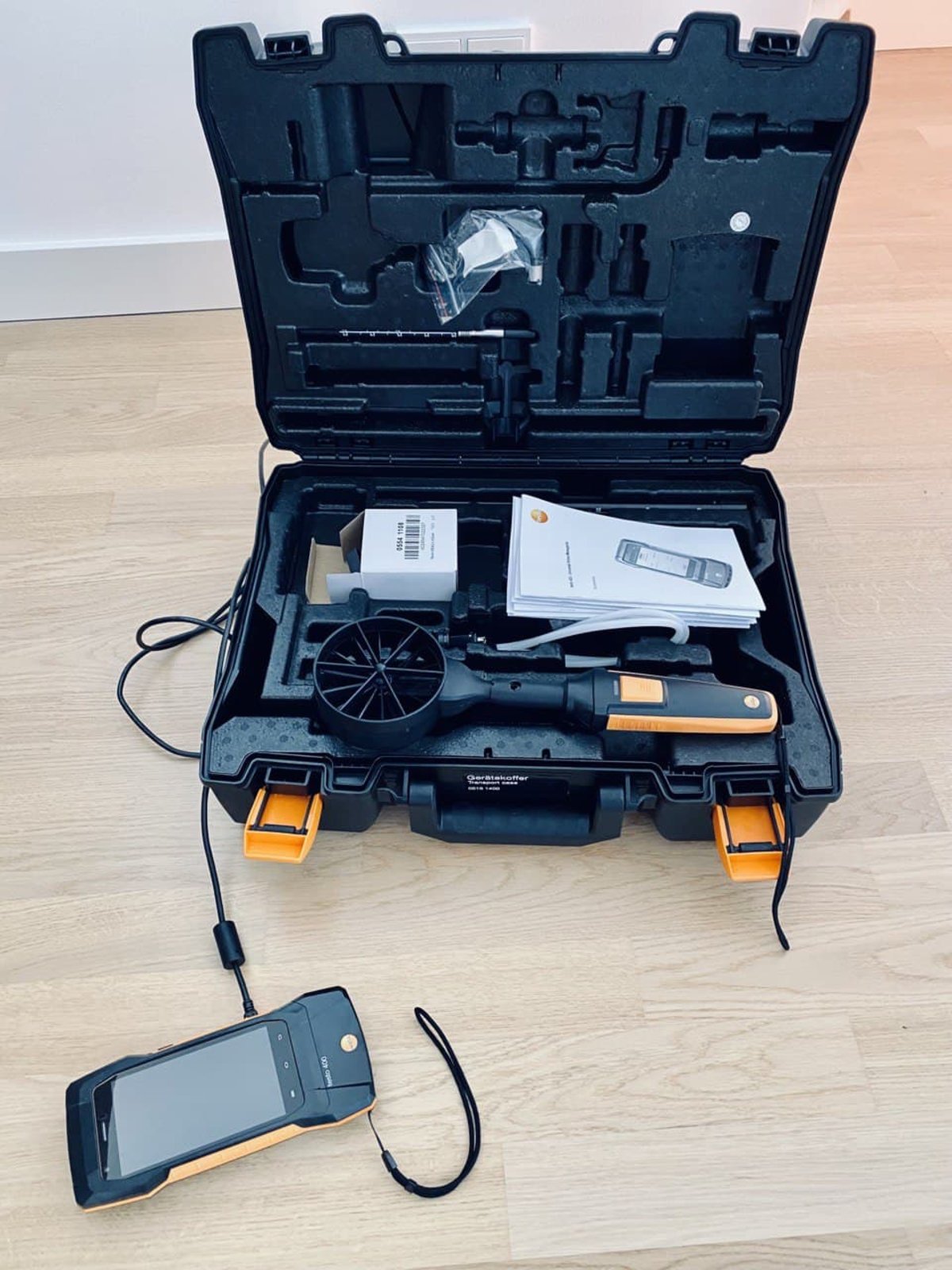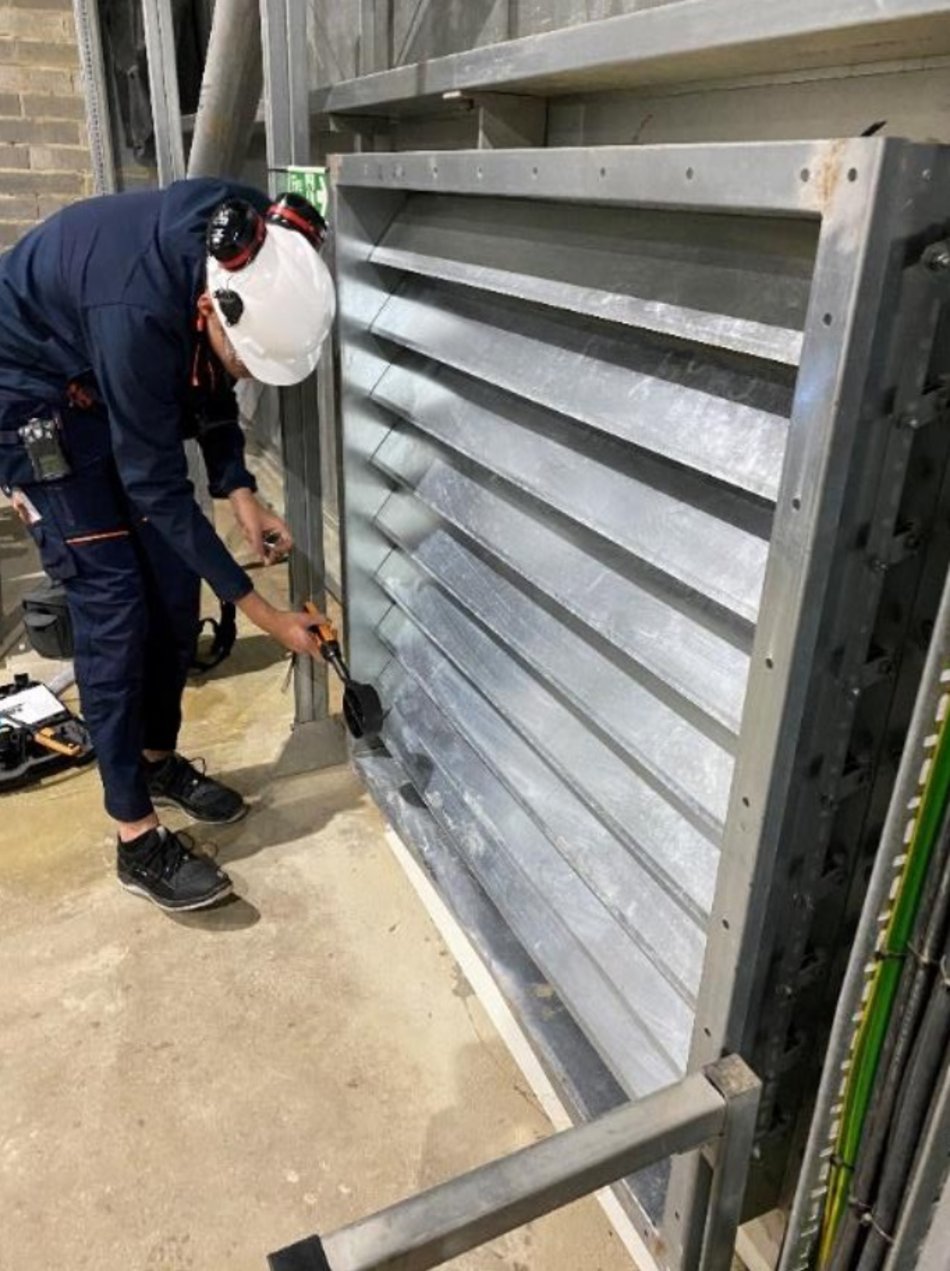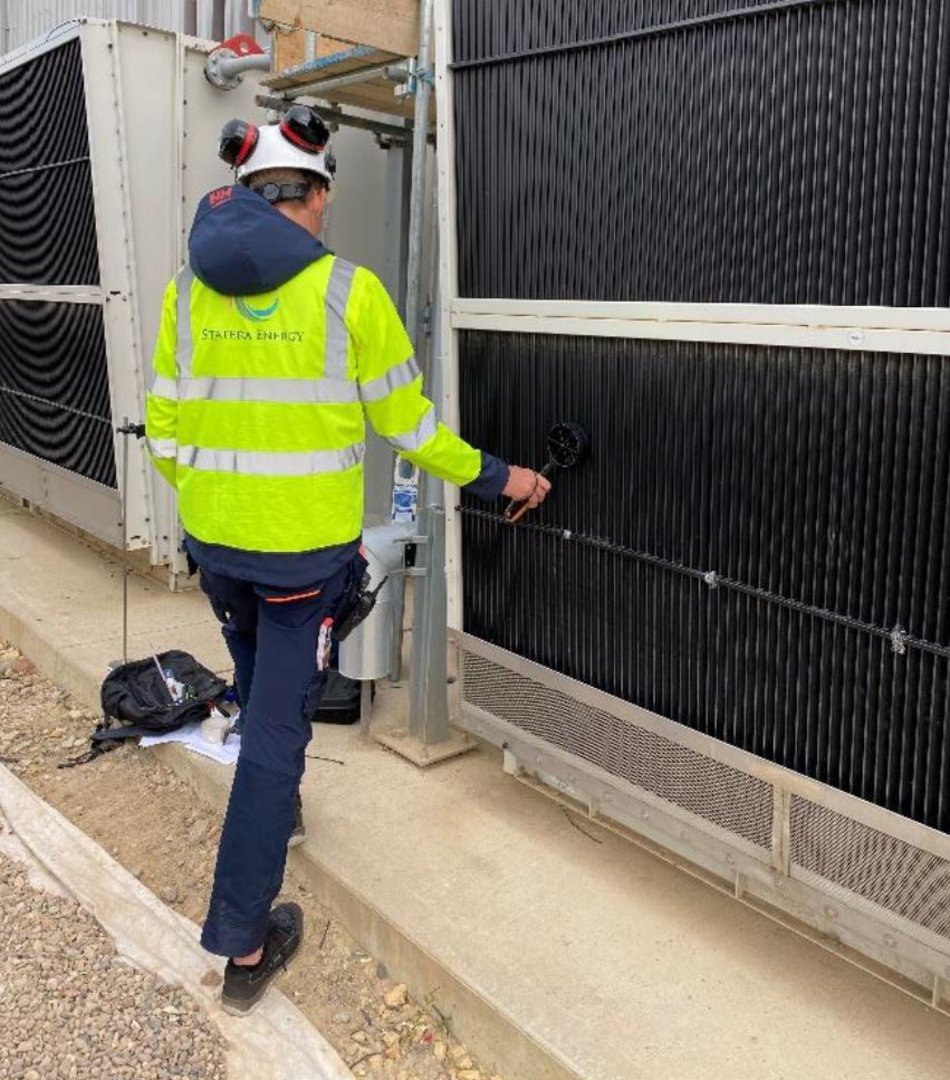Measurement Technology / Comfort
Simulation is our core area, in which we are most familiar and in which we can play to our strengths. However, we also strive to continuously develop and offer our customers additional services.
After completion of projects or at certain locations, we offer our customers the possibility to measure and validate indoor air velocities and indoor air temperatures. This enables us to compare the results of our simulations with the real conditions on site and to check whether and to what extent the actual execution corresponds to the CFD (Computational Fluid Dynamics) results.
With these measurements, we can record and evaluate air speeds, air directions, temperatures, humidity and comfort in accordance with the DIN EN ISO 7730 standard. In this way, we ensure that the simulation results match reality as closely as possible and that our customers can achieve the best possible results.
Verifying and validating our simulations against measurement data allows us to verify the accuracy of our models and calculations and ensure they meet our customers' requirements. This holistic approach ensures that the simulation results are reliable and meaningful, helping our customers to make informed decisions and take effective measures to optimize indoor air conditions.
Testing of airflow - Fog experiments
Fog experiments use fog machines and a non-toxic solution to create a significant amount of fog. The smoke machines can be placed and activated at the desired measurement points. By recording video, the spread of the fog can be documented, allowing the movement of the air to be logged.
Fog experiments are an effective method to visualize and analyze the flow and propagation conditions in a specific room or at a specific location. The fog generated makes it possible to visualize air movements, air currents and potential areas of stagnation.
By combining fog tests with other measurements and analyses, important insights into air circulation, the distribution of pollutants or aerosols and the efficiency of ventilation systems can be gained. This can help to improve indoor air quality, minimize possible health risks and develop energy-efficient building design solutions.
Loop measurement
The loop measurement is a simple measurement method that uses a vane anemometer. In order to carry out a loop measurement, a directed flow in the measurement cross section is required. The measuring device is moved quickly and evenly along a measuring line while the measuring surface is covered. The volume flow can be determined by moving the measuring device transversely or longitudinally to the direction of flow.
The vane anemometer measures the airflow velocity at various points along the measurement line. The volume flow can be calculated by integrating the velocity measurements along the measuring line. This simple measurement method is particularly suitable for situations in which there is a directed flow, for example in ventilation ducts or air shafts.
Trivial procedure
With the trivial procedure for measuring the volume flow, the measuring area is divided into equal-sized partial areas. The measuring point is located in the center of gravity of each sub-area. The speeds that are measured at the individual measuring points are weighted according to the partial areas and arithmetically averaged. In this way, the volume flow can be calculated.
The trivial method is particularly suitable for situations in which a uniform distribution of the flow over the measurement area can be assumed. It is a simple and inexpensive method to determine volumetric flow. It is often used when measuring air inlets and outlets in ventilation systems or when registering the volume flow in ducts.



